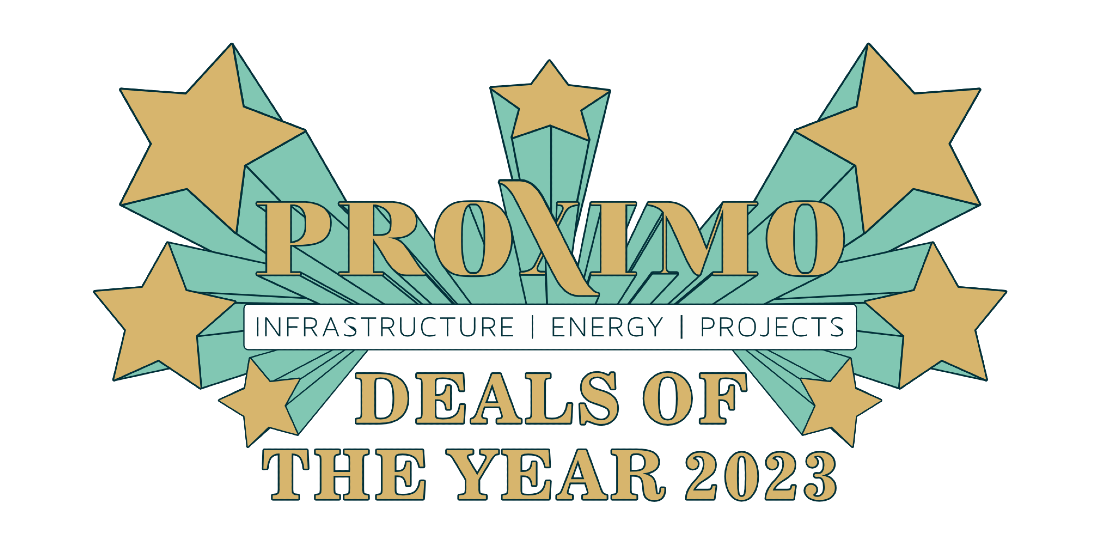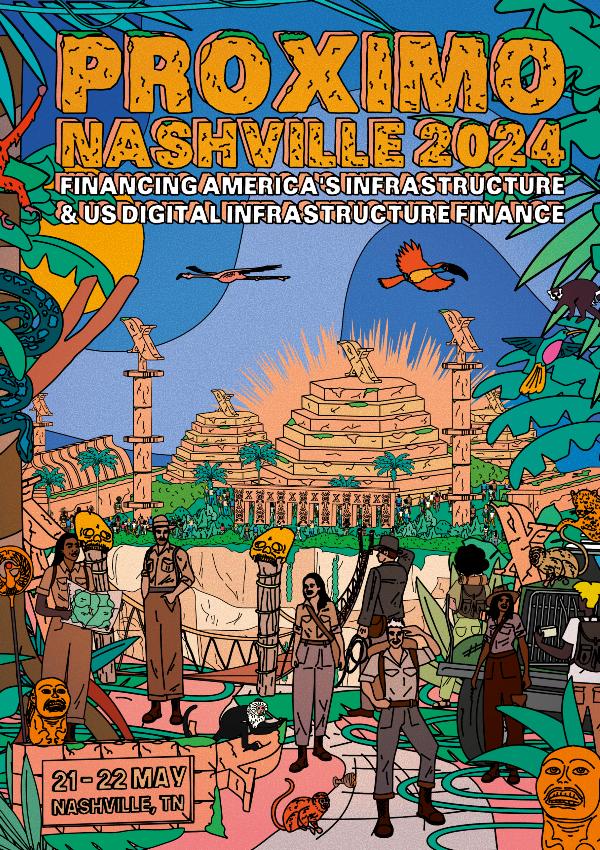Proximo Weekly: ECAs up their game in Africa
ECAs are showing increased innovation and flexibility around the structure of export credits in Africa, particularly covering the 15% down payment financing traditionally needed for ECA-backed deals. But there is still room for further development of the ECA product offering.

Next week Proximo’s sister publication TXF holds its annual export, agency and project finance event – TXF Global – in Madrid. Africa will be high on the agenda given it has played host to a raft of innovative big-ticket financings in the ECA market this summer. The new deals bode well for the wider export finance community given increased ECA collaboration and flexibility has long been touted as the key to taking a more holistic approach to large-scale project finance deals. And the funding mix backing African projects is becoming more diverse, too – in terms of bespoke structures and the blend of lenders on these deals.
The largest such scheme is Angola’s Luanda Bita Water Supply Guarantee Project, which is intended to improve access for over two million residents to potable water services in selected parts of south Luanda, and is backed by a $1.1 billion 15-year ECA/DFI-backed facility closed in June. The deal set a global record as the biggest World Bank guaranteed financing and makes a significant contribution towards UN Sustainable Development Goal (SDG) 6.
The project is funded by two loans: a $910 million facility supported by a World Bank IBRD guarantee (along with ATI guarantees); and a $165 tranche covered by the French ECA, Bpifrance. The deal is a relatively rare example of joint DFI and ECA financing support, a topic that should be high on the agenda at COP26 later this year as the world looks to progress the UN's SDGs.
This project is also a great example of an innovative blended finance solution using World Bank guarantees and ATI insurance that brought comfort to the financial markets and helped secure financing.
Given the size of investment required for the project and the level of uncovered risk, the government of Angola initiated discussions with ATI to explore potential additional credit insurance options. Working together with the private insurance market, ATI provided the lenders a second loss insurance above World Bank’s guarantee of up to $351 million to cover principal and interest, therefore, enabling the project to reach financial close. ATI’s cover will mitigate the risk of the government’s failure to make debt service payments under the loans for the project.
Likewise this summer, Ghana’s MoF closed three landmark ECA-backed deals: a €280 million Euler Hermes-covered social loan to fund rehabilitation of the first section of the 773 km Eastern Corridor road; Deutsche and Investec arranged a €600 million EKN/ECIC-backed financing for a railway project; and a five-year €78 million (about £71 million) UK Export Finance-backed financing deal for a project to design, construct, and equip the new Eastern Regional Hospital.
The private insurance market has not shown the appetite to absorb the residual risk on ECA-backed financings in Africa as it did pre-pandemic, although there was already a perceived gap before the Covid crisis. When the pandemic hit and the private insurance market dried up, importers and project sponsors were calling institutions like Africa Exim-Import Bank and AfDB for cover on the residual risk on ECA-backed deals - but to no avail.
Discussions around ECAs having more flexibility to support the financing of the down payment on a traditional ECA-backed loan were mooted by market participants long before the pandemic. For example, in August 2019, the Business and Industry Advisory Committee to the OECD (BIAC), an independent international business association devoted to advising government policy, had highlighted the issue around sourcing funding for 15% of an export contract value, particularly for large government contracts in Sub-Saharan Africa, in a report regarding revisions to the OECD Consensus.
In short, economically viable and sustainable projects were being held up by this perceived gap and therefore the Consensus should allow for ECAs to support 100% of an export contract if needed. But some dealmakers claim 100% cover shouldered by a single ECA is a lazy solution to a complex problem, as it can stifle the private market.
The absence of commercial risk insurance and/or credit capacity for Ghana risk did, however, spawned innovation around covering the 15% down payment financing traditionally needed for ECA-backed deals, with ECIC coming in alongside EKN on the Ghana rail deal to absorb the residual risk, an innovative solution to an ongoing problem for export credits on the continent.
In fact, EKN approved the involvement of ECIC and the banks had to ensure the collaboration didn’t break any OECD Consensus rules before pushing the deal through ECIC’s approval process. So while good projects with good sustainable impacts were being held up in (and before) the Covid epoch, a viable financing template has emerged to help rival the somewhat teutonic solution of 100% cover with one single ECA (Euler Hermes for instance provided a 95% guarantee on the Ghana road deal).
But there are a number of active ECA banks which are unwilling to come in alongside the commercial portion and just stick with funding the export credit. On paper, bulge-bracket banks with large distribution teams - like BNP Paribas - should have the institutional reach to find non-traditional lenders to get involved with the commercial element of an export finance deal.
However, this is not happening despite there being a wall of impact dollars looking to deploy, with the stronger focus on energy transition from investors. And given large ECA banks have sizeable distribution teams and healthy capital markets businesses, these impact funds should be thread into export finance deals. But it seems institutional investors continue to go after listed financial instruments and not loan products.
Listed financial instruments, for instance, need a project vehicle with listed notes which becomes too complicated and goes well beyond the reach of your average export finance banks. So there is an opportunity in how the down payment is financed going forward. These asset managers have sustainability targets, and threatening these funds into the commercial portion of export finance loans would solve the perceived gap on the residual risk for ECA-backed deals on the continent.
Acre Impact Capital, which entirely focuses on channelling impact dollars into export finance commercial loans, is launching a series of funds which will mobilise billions towards sustainable projects by unlocking the ECA tranche. These funds will be available to export finance banks that don't have the distribution teams or the reach that Acre does. Crowding in impact dollars will be paramount to the success of releasing the export finance market as a dream for impact investors.
Selected news articles from Proximo last week
NORTH AMERICA
PFA issues green bond for Fargo-Moorhead Diversion Project
The Public Finance Authority (PFA) has raised $273 million in a green bond issuance for the Fargo-Moorhead Diversion Project, a flood diversion project along the Red River in the Fargo-Moorhead Metropolitan Area in North Dakota and Minnesota, USA.
EUROPE
Mercuria invests in CWP's renewables portfolio
CWP and Mercuria Energy Trading have started a joint venture to complete and build out CWP ‘s renewables portfolio in Bulgaria, Serbia, Romania, and Ukraine.
ASIA-PACIFIC
Quang Ninh LNG-to-power project eliminates bidders
A joint venture comprising PV Power, Tokyo Gas, Colavi and Marubeni was the only bidder to overcome all project requirements to invest in the $2 billion Quang Ninh LNG-to-power project in Vietnam.
MIDDLE EAST & AFRICA
The $1.2 billion project debt refinancing for the 1.73GW PP11 gas-fired independent power project (IPP) – sponsored by Saudi Electricity Company (50%), Engie (20%), Sojitz (15%) and Alijomaih (15%) – has reached financial close.
SOUTH AMERICA
Further details surface on CEME1 financing
Further details have emerged on the $980 million financing raised by Generadora Metropolitana for the construction of the 480MWp CEME1 solar PV plant and the conversion of the 132MW Los Vientos diesel-fired plant to natural gas in Chile.
The Proximo Membership
Join a brand new community of project finance professionals getting unrivalled access to unique analysis, market data and a global portfolio of expert industry events in the energy and infrastructure space. Click here to find out more





